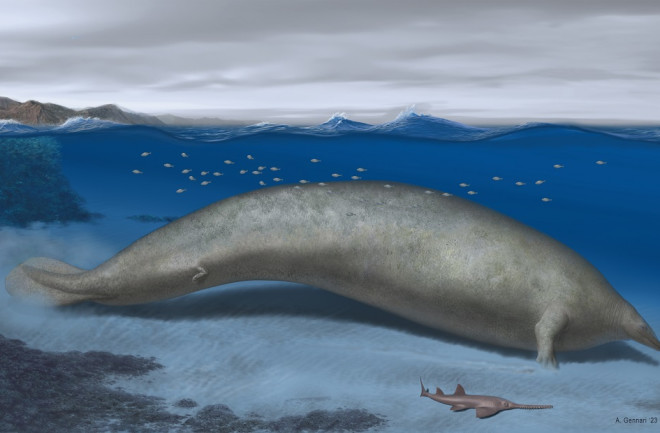Article Introduction:
Have you ever heard of Perucetus colossus, a massive new whale discovered in the Peruvian desert? This enormous creature weighs between 170,000 and 680,000 pounds, and its size poses a caloric quandary. How could such a slow and ponderous sea creature survive? The answer lies in its unique feeding habits, which may include filter feeding, munching on sea grass, suctioning up slow-moving prey, or even tearing off pieces of dead sea creatures. Despite its size, this whale managed to thrive.
The Heaviest Animal:
Currently, the blue whale holds the record for being the world’s heaviest animal, weighing between 290,000 and 330,000 pounds. However, Perucetus colossus surpasses even the blue whale in terms of its size. With a 65-foot skeleton and bones two-to-three times heavier than a blue whale, this massive creature demonstrates the power of evolution. Its extravagant set of bones played a crucial role in its survival.
Discovery Challenges:
Paleontologist Mario Urbina faced a significant challenge when he found the fossils of Perucetus colossus in the Peruvian desert back in 2010. The enormous bones half-buried in sediment initially confused him and his colleagues, as they appeared too large to be bones. Eventually, they classified the fossils as a new species of basilosaurid whale, an early relative of modern whales and dolphins. These fossils, dated at 39 million years old, shed light on the evolution of these ancient sea creatures.
Shallow-Dwelling Adaptations:
The development of reinforced bones in shallow-dwelling sea creatures, like Perucetus colossus or manatees, provides necessary ballast in their habitat. In contrast, modern whales living in the deep ocean have lighter bones. To navigate the shallows, it is speculated that Perucetus colossus may have swam similar to manatees or propelled itself by undulating the rear part of its body. The presence of vestigial hind legs suggests they may have aided in maneuvering or served little purpose at all.
The Evolutionary Journey:
The evolutionary path of basilosaurids, also known as “king lizards,” remains a mystery. It is believed that tetrapods, four-legged creatures that once lived in water 300 million years ago, made the choice to return to an aquatic lifestyle, possibly to avoid predators. This transition likely occurred in stages, and some scientists propose that artiodactyls, hoofed animals, played a role. An important predecessor to basilosaurids is the indohyus, or “India’s pig,” which shares a unique ear structure found only in whales, used for underwater hearing.
Conclusion:
The discovery of Perucetus colossus and its unique characteristics shed light on the fascinating evolution of whales and their adaptation to different environments. From its massive size to its feeding habits and the challenges faced during the discovery process, this ancient whale continues to captivate scientists and pique our curiosity about the secrets of the past.
